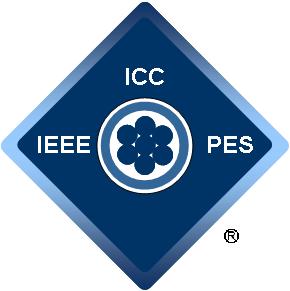

The ICC Website is changing. As this transition is made, our new format can be found at www.pesicc.org/ICCWP. Please send any comments or questions to mvh@voncorp.com.
Check this page periodically to learn about the Presentations scheduled for the Fall meeting.
Please Note: This is a only a listing of the presentations and
UNLESS NOTED, DOES NOT IMPLY THE ORDER IN WHICH THEY WILL BE PRESENTED.
·The addition of extra heating
·The need for compensating cooling capacity
·Impact on downstream processes
·Optimal manufacturing balance for all elements – speed vs runtime, especially with the increasing temperatures
·Quality awareness
There is a growing need for reliable power the world over and this has fuelled the increasing need for power cables at both MV & HV. This increase raises the major challenge of manufacturing the increased amounts of high quality Power Cables with the manufacturing infrastructure that exists today. Recently the available manufacturing technologies employed for XLPE Power Cables have been upgraded to enhance the productivity and performance of XLPE cables.
The analysis shows that it is practically possible to reduce the effect of all of today’s constraints to productivity. Within the manufacture of the insulated cable core this means that a variety of techniques can bring increases within the range of 20 - 30%. It is not sufficient to merely raise the amount of cable manufactured, by simply increasing speeds or temperatures, as users are requiring the highest quality and thus longest predicted lives from any new cable. All of the benefits to productivity, together with the associated issues, discussed here have been shown to be compatible with high reliability by laboratory electrical tests.
Modern Power Cable production is based on a chain of linked processes. The total output or productivity is determined by the throughput of the most constrained part of the process chain. In discussing these elements it is perhaps useful to think of productivity as being the product of:
Available Hours * Production Rate * Quality Factor
Using these elements it is possible to discuss the
constraining aspects for XLPE Power Cable manufacture (Table 1).
Table 1 Constraints to throughput for XLPE Power Cable manufacture
|
|
|
Relevance at MV HV |
|
|
Available Hours time available for cable production |
Runtime of the extrusion before the development of scorch that either disrupts the flow or introduces electrical stress raisers. |
High |
High |
|
Production Rate speed at which the most constrained of the cable manufacturing processes |
Temperature increases associated with the higher melt output |
High |
High |
|
Time taken to adequately crosslink and cool the cable core prior to exiting the CV tube: depends upon cable size and the temperature of the tube conductor. |
High |
Medium |
|
|
Degassing - temperature & time required to reduce the by-products to acceptably low levels |
Low |
High |
|
|
Quality Factor cables must complete a series of tests before service |
Secure performance in qualification tests |
High |
High |
|
Correct dimensional tolerances |
Medium |
High |
|
|
Reliable discrimination at Electrical Routine Test |
High |
High |
|
 obtained his B.S.E.E. degree from the University of Miami, M.E. degree
in electric power engineering from the Rensselaer Polytechnic Institute,
Troy, N.Y. and Ph.D. degree in electrical engineering from the
University of Texas at Arlington. He was a member of the electrical
engineering faculty at the University of Florida and director of the
Florida Power Affiliates and Power Quality Laboratory since 1987. He
joined the faculty of the University of South Florida as a Professor of
Electrical Engineering in 2005. He is the Director of the Power Center
for Utility Explorations and the Power and Energy Applied Research
Laboratory. He serves as the Editor-in-Chief of the International
Journal of Power and Energy Systems, and Chair of many international
conferences on energy systems. His research areas are Power Quality,
Electricity Metering, Flexible AC Transmission Systems, Demand Response,
Power System Reliability, Custom Power, Power Electronics and Motor
Drive Systems, and FRIENDS (Flexible, Reliable and Intelligent
Electrical eNergy Delivery Systems).
obtained his B.S.E.E. degree from the University of Miami, M.E. degree
in electric power engineering from the Rensselaer Polytechnic Institute,
Troy, N.Y. and Ph.D. degree in electrical engineering from the
University of Texas at Arlington. He was a member of the electrical
engineering faculty at the University of Florida and director of the
Florida Power Affiliates and Power Quality Laboratory since 1987. He
joined the faculty of the University of South Florida as a Professor of
Electrical Engineering in 2005. He is the Director of the Power Center
for Utility Explorations and the Power and Energy Applied Research
Laboratory. He serves as the Editor-in-Chief of the International
Journal of Power and Energy Systems, and Chair of many international
conferences on energy systems. His research areas are Power Quality,
Electricity Metering, Flexible AC Transmission Systems, Demand Response,
Power System Reliability, Custom Power, Power Electronics and Motor
Drive Systems, and FRIENDS (Flexible, Reliable and Intelligent
Electrical eNergy Delivery Systems).Return to the Fall 2006 page
